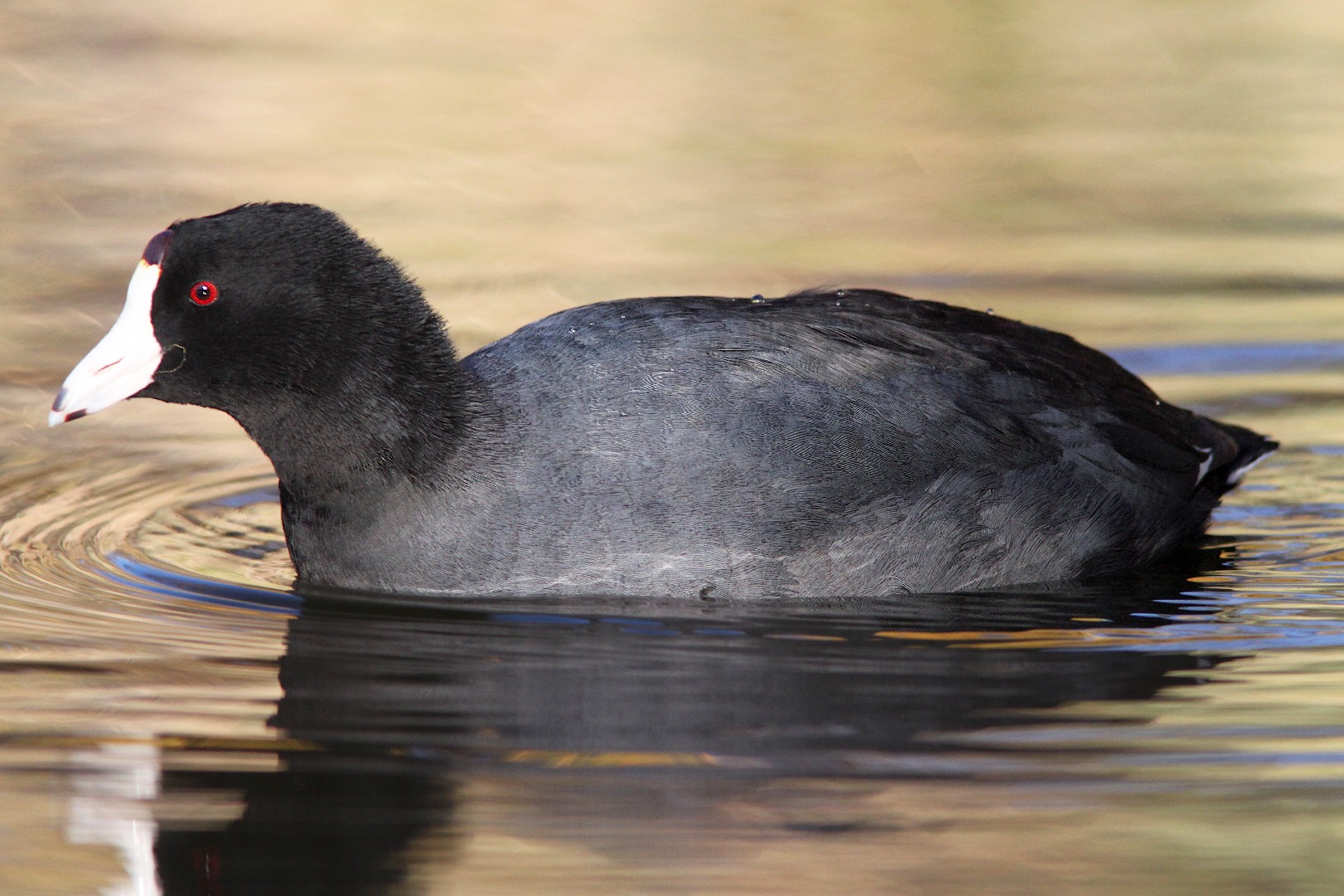American Coot
A species of Coots, Also known as Blue Peter, Mudhen Scientific name : Fulica americana Genus : Coots
American Coot, A species of Coots
Also known as:
Blue Peter, Mudhen
Botanical name: Fulica americana
Genus: Coots
Content
Description People often ask General Info
Description
The american Coot is easily mistaken for a species of duck but does not have webbed feet and does not have a waddling gait. They can be found in and around ponds and lakes and frequently dive under the surface to feed on algae and other vegetation. These birds can live to be 22 years old!
Size
38 cm
Life Expectancy
20 years
Nest Placement
Floating
Clutch Size
8 - 12 eggs
Incubation Period
1 - 2 broods
Number of Broods
23 - 25 days
Feeding Habits
American Coot consumes a diverse diet, primarily favoring aquatic vegetation like algae, duckweed, and sedges. On land, it opts for grains and leaves from specific trees. Its omnivorous nature extends to insects, crustaceans, mollusks, and small aquatic animals, including tadpoles and salamanders.
Habitat
American Coot thrive predominantly in freshwater wetlands, including lakes, marshes, and rivers, often with dense emergent vegetation along the shorelines. They favor environments with both open water and vegetative cover which provide protection and nesting sites. American Coot adapt to a range of altitudes and conditions but are less common in saltwater or brackish habitats. They may utilize diverse water bodies, from prairie potholes and swamps to urban park ponds, and show resilience by nesting in seasonal wetlands during high water or persisting in permanent waters during drought.
Nest Behavior
American Coot build nests aligned with vegetation, laying eggs in a hollowed interior and providing consistent parental care, anchored to upright stalks for stability.
Nest Characteristics
The nest of american Coot is a floating platform, often over water within dense reeds or cattails. It is a shallow basket of interwoven materials with a fine lining, about 12 inches in diameter, featuring a 12 to 15-inch ramp and a 6-inch-wide egg cup.
Dite type
Herbivorous
People often ask
General Info
Feeding Habits
Bird food type
Sounds
Call
Recording location: Mexico
Call
Recording location: United States
Call
Recording location: United States
Behavior
American Coot exhibit a range of foraging behaviors such as walking, swimming, and diving to pluck plant materials, often appearing slow and meticulous. They engage in labored flight, preceded by a characteristic running start across the water. In winter, american Coot may form large flocks, sometimes intermingling with different waterfowl, and display kleptoparasitic tendencies by snatching food from ducks and other birds. A peculiar reproductive tactic includes laying eggs in the nests of conspecifics and other bird species. Their daily life reflects an adaptability to their wetland habitats, utilizing both individual and social strategies for survival.
Distribution Area
The American coot's breeding habitat extends from marshes in southern Quebec to the Pacific coast of North America and as far south as northern South America. Birds from temperate North America east of the Rocky Mountains migrate to the southern United States and southern British Columbia. It is often a year-round resident where water remains open in winter. There has been evidence of birds travelling as far north as Greenland and Iceland. 
Species Status
The American coot is listed under "least concern" by the IUCN Red List of Endangered Species. They are common and widespread, and are sometimes even considered a pest. They are rarely the targets of hunters since their meat is not considered to be as good as that of ducks; although some are shot for sport, particularly in the southeastern United States. 
